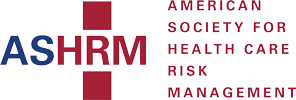The national opioid crisis is impacting individuals and families across the country, from small towns and wealthy suburbs to big cities. According to the Centers for Disease Control, 4.3 million people used pain relievers for non-medical purposes in 2014 and opioid-related deaths have risen by 200 percent since 2000, with nearly 28,000 deaths in the U.S. in 2014.
Methadone clinics providing medication-assisted addiction treatment have increased with the soaring numbers of new addicts. The number of clinics has gone from 750 in 1994 to 1,400 today across 48 states. However, treating America’s soaring population of recovering opioid addicts carries some very specific risks for clinic operators.
Navigating the risks
A methadone clinic is a doctor’s office, a pharmacy and a social services center. This potentially combustible environment is patronized daily by addicts from all walks of life and in varying stages of the recovery process. The opioid abuse epidemic continues to drive demand for these service providers that face a variety of issues dealing with an often unpredictable client base. Not surprisingly, the on-site pharmacies give rise to some of the most dangerous exposures clinics face. Addicts receiving daily, supervised doses of methadone (or similar opioid medication) to cut down their cravings for heroin or prescription painkillers and avoid withdrawal symptoms, while blocking the effects of other opiates. But, many patients are looking to do more than just curb their cravings, and that’s where the clinic operators need to focus on reducing their risks, especially around the dispensing of drugs.
You can’t be too cautious
The allure and potential street value of methadone and other opioid medications makes security a major concern and source of potential liability. Medication must be stored and dispensed through a well-documented process in a highly secure and controlled environment. Even the disposal of dosing cups must be meticulous. Addicts have been known to search for methadone residue on cups in a clinic’s trash, creating liabilities for the clinic operators.
After establishing a successful track record of treatment, a patient may be allowed to self-administer the dose at home for days or weeks at a time, depending on local regulations. This can help reduce costs for the centers and make maintenance less cumbersome for the individual. However, moving medications off premises also reduces the clinic’s ability to effectively monitor how these medications are being administered. If self-administering patients take a larger dose than prescribed, they could cause harm to themselves or others and the clinic could be held liable.
Patients taking the prescribed amount of methadone at the suggested intervals and nothing else will function in a largely predictable way. It is important that clinics verify that their patients are stable when they leave the clinic without apparent signs of being under the influence. Keeping track of a patient’s post-dosing activities once they leave the clinic environment is much more difficult, if not impossible. If a patient drives under the influence of methadone combined with something else and causes a serious accident, the clinic is likely to receive a claim against their general liability policy. That’s why clinics needs to observe and document that the clients were in stable condition when they left the clinic.
Covering all contingencies
Insurance for these medication-assisted treatment clinics must cover multiple bases, combining medical professional liability and general liability insurance, while integrating explicit coverage for pharmacy risks.
A proactive risk management regimen can help a clinic avoid claims and will likely be central to its defense of any liability challenges. Generally speaking, a clinic’s risk management practices should center around five main pillars:
- On-site security with special focus on the pharmacy
- Thorough documentation of everything from clinical testing, to home assessments for those taking medication off-site
- Strict protocols and procedures around medication dispensing and disposal
- Thorough hiring practices including background and credentialing checks
- Compliance with federal and state regulations.
Methadone clinics and other medication-assisted treatment centers are an important component of helping communities and families deal with opioid addiction and recovery. Using the necessary risk management techniques and having the right insurance coverage permits these clinics to economically serve vulnerable populations without risking potentially catastrophic outcomes.
Paula Caballero is a healthcare underwriter based in Beazley’s Dallas, TX office. Caballero has over 25 years of insurance industry experience in a variety of sales, business development and underwriting positions.








